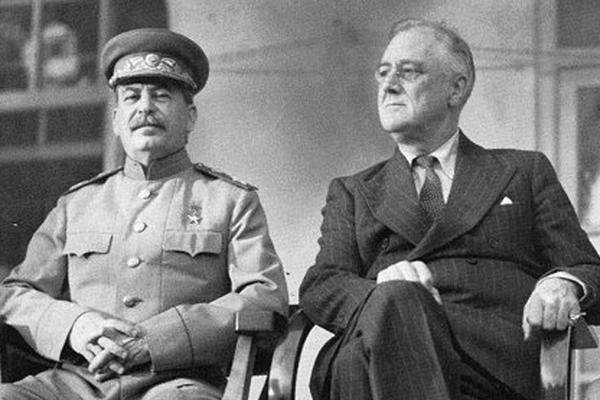(Korean War History) The Division of Korea, 1945-1948. Post #12
Prof. Kathryn Weathersby

For the United States, the occupation of the southern half of Korea was an economic burden, as it had to prop up the food supply, power supply, etc. of a region with few valuable resources of its own. For the Soviets, however, control of the mineral-rich, industrialized north of Korea was an important means to secure resources that their war-torn country badly needed. Therefore, as the Foreign Ministry prepared to discuss a Korea settlement at the Moscow Conference of Allied Foreign Ministers in December 1945, Soviet diplomats worked out plans to ensure continued control over the economic assets in their zone.
One way to do that was to claim, as a briefing paper recommended, that all Japanese military industry and heavy industry were war trophies that must be transferred to the Soviet Union as partial reparations. Since Soviet participation in the war against Japan in 1945 had been so brief, these resources would also be considered compensation for “the huge damage inflicted by Japan on the Soviet Union throughout the time of its existence, including the damages from the Japanese intervention in the Far East from 1918-1923.”
The Soviet government was well-informed about Japanese industrial properties in Korea and the country’s valuable mineral resources because its consulate in Seoul had prepared detailed reports on these assets in the last years of Japanese rule. It should be noted that Moscow adhered to a neutrality treaty with Japan until it declared war on August 9, 1945, and therefore continued to maintain a consulate in Seoul throughout the Pacific War. With knowledge of the location and nature of Korea’s resources, the Soviet Army sealed off its sector economically as soon as it began its occupation. The Red Army allowed people to cross the 38th parallel to the south but stopped the flow of electrical power and coal. It also hindered transport, mail delivery, and many other functions important to daily life.
Soon after the US Army arrived in the South in mid-September, American officers travelled to Pyongyang to invite their Soviet counterparts to join them in Seoul for discussions on the immediate problems created by the division at the 38th parallel. Soviet officers did not respond to the invitation, however. Not only did they want to secure the north’s resources for themselves, but they also did not want the Americans to prevent them from dismantling Japanese-built industrial plants and sending the equipment by railroad to the Soviet Union.
American interference in economic affairs was a real possibility. On November 8 US Ambassador Harriman presented a letter to Stalin repeating the earlier American request that the two occupation commands meet to discuss how to resume trade, railroad transportation, and coastal shipping, establish uniform fiscal policies, and other urgent matters. Fearing that such discussions would interfere with Soviet confiscations of “war trophies” the Foreign Ministry recommended instead that the two powers create a Special Soviet-American Commission that would “resolve the immediate questions arising from the fact of the presence on the territory of Korea of Soviet and American troops.”
We can understand, therefore why the Soviet delegation to the Moscow Conference was alarmed when Secretary of State Byrnes began the discussion of Korea by raising these “immediate questions” rather than addressing the creation of a unified government, the subject that was on the agenda. Byrnes asked Molotov whether Moscow was prepared to authorize the Soviet commander in Korea to start negotiations with his American counterpart to solve the practical problems Harriman had enumerated in his November 8 letter. Molotov objected that Harriman’s letter did not concern the issue placed on the agenda, which prompted Byrnes to make matters worse by explaining that he mentioned the letter because it contained the ideas of the US government about what would be the first step toward establishing an independent Korean government. However, when Molotov resisted, Byrnes stated that Harriman’s proposal would be a step toward establishing a trusteeship. The foreign minister naturally insisted that he did not understand how these questions were related and would like to have this explained.
In the next post, we will look at how the discussion over Korea proceeded from this unpromising and confused beginning, leading toward the conclusion of a completely unworkable agreement on trusteeship.
[Sources: Suzdalev, “A Report on Japanese Military and Heavy Industry in Korea,” December 1945. Archive of the Foreign Policy of the Russian Federation, Fond 0102, Opis 1, Delo 15, Papka 1, Listy 22-29; Jacob Malik, “On the Question of a Single Government in Korea,”; The transcript of the Moscow discussions are in Foreign Relations of the United States 1945 Volume II.]
To listen to the audio version of this article click on the play image.

Brought to you by @tts. If you find it useful please consider upvoting this reply.
Wow nice one @wisdomandjustice
영어라 무슨 내용인지는 모르겠지만
영어로 이렇게 포스팅 하는 능력이 부러울 따름입니다.ㅎ